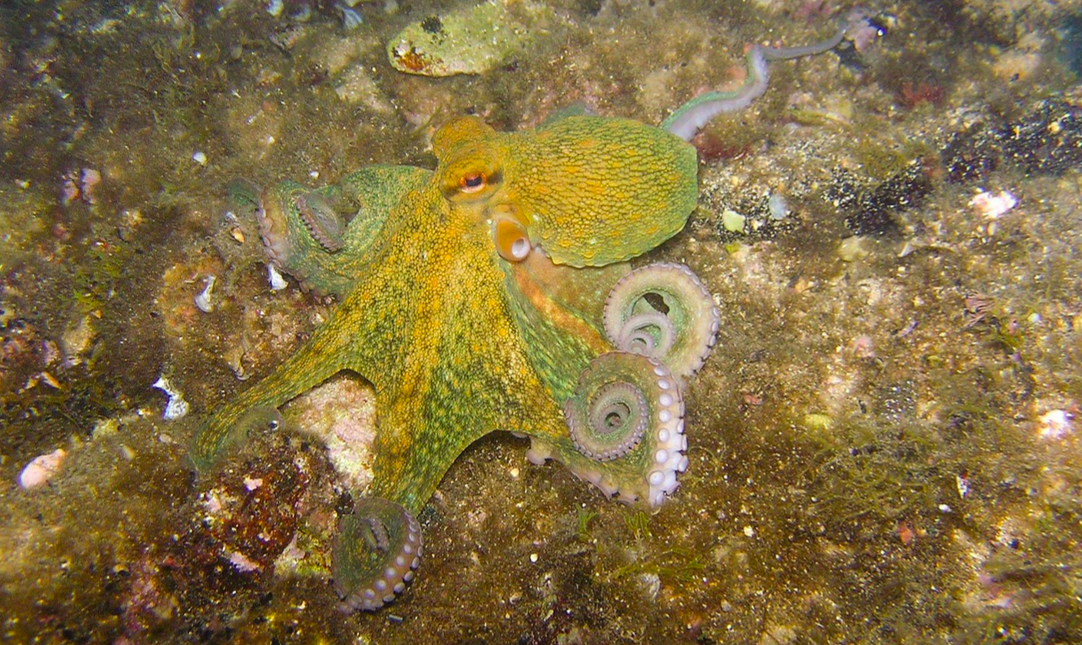Octopuses have many amazing abilities and characteristics; they have huge brains and can solve puzzles; their ink can disguise them and disorient attackers; and their ancestors are thought to be about 330 million years old. There are about 500 million neurons in octopus arms, and the suction cups on those arms may hold as many as 10,000 sensory cells each. Scientists have now shown that octopus arms can move over the seafloor to taste the stuff that’s there, and determine whether it is safe to eat. The arms can sense the biochemicals in microbial communities, and figure out whether they are harmless or dangerous. The findings have been reported in Cell.
Microbes surround and coat many things in our world, even underwater. Marine microbiomes are dynamic, changing in response to environmental conditions constantly. They release different chemicals that reflect their surroundings, and the octopus can sense some of them, like those that grow on eggs or crabs. This enables them to understand their habitat, explained first study author Rebecka Sepela, a postdoctoral researcher at Harvard University.
This work aimed to decipher some of the sensory capabilities of octopuses, which can taste by touching. The researchers observed saltwater tanks containing California two-spot octopuses, which are enclosed by a lid that is fastened on with velcro and weighted down by bricks. “We’ve had them open their tanks and get out,” noted senior study author Nicholas Bellono, a Harvard Professor.
When fiddler crab shells or octopus eggs were placed in the tanks, there were strong reactions from the octopuses. They are able to eat blindly, foraging in the dark by relying on the sensory information that comes in through their suction cups and arms. The octopuses quickly ate live fiddler crabs, which they typically enjoy, but opted not to consume decaying crabs. Octopus moms also cared for healthy eggs, while rejecting dead or infertile ones.
The stuff that was put in the tanks, whether it was good or bad crabs or eggs, hosted significantly different microbiomes. Live crabs didn’t carry many microbes, while decaying crabs had tons of different kinds of bacteria. Rejected eggs were found to host spirillum-shaped bacteria, which were absent from healthy eggs.
A genetic analysis revealed even more about the microbiomes, and the molecules they emit. The investigators identified these compounds and tested their impact on octopus receptors.
This work showed that some microbial compounds elicited a response from certain octopus receptors.
When one of the compounds that is a product of the spirillum-shaped bacteria was put onto a fake egg and placed in the octopus tank, it was briefly groomed, then rejected by the mother octopus.
This study also opens up new questions about how widespread this type of interaction might be.
“There is a lot more to be explored,” said Bellono. “Microbes are present on almost every surface. We had a nice system to look at this in the octopus, but that doesn’t mean it’s not happening across life.”
Sources: Harvard University, Cell
